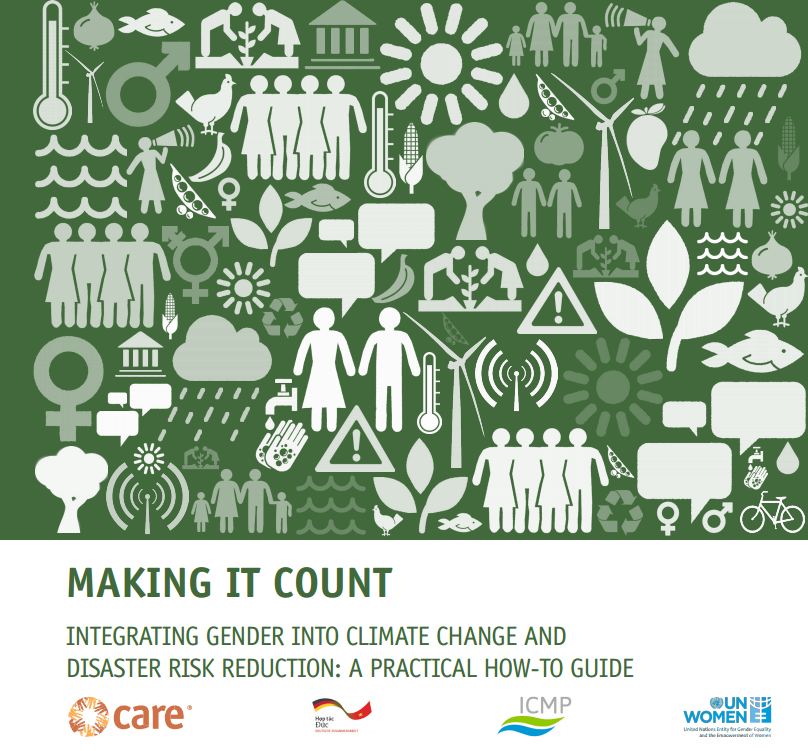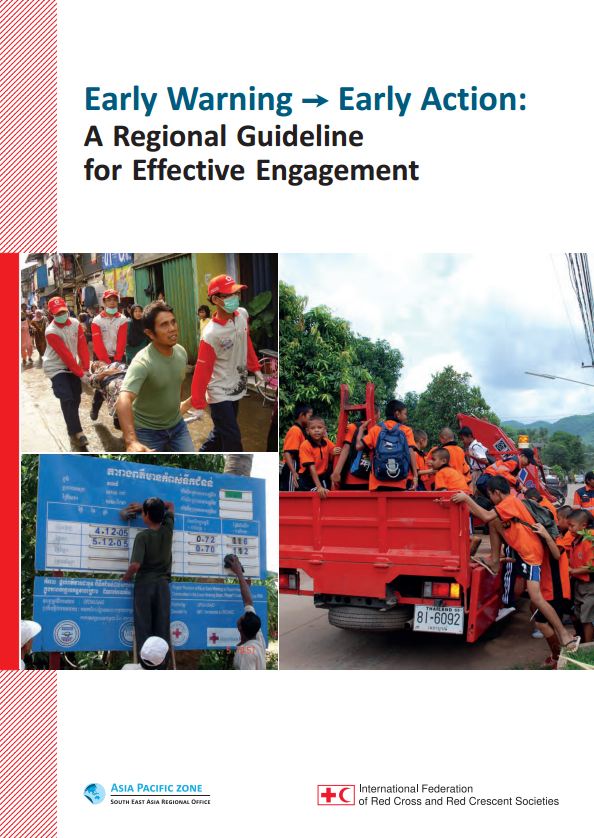Purpose
This guide gives suggestions on how to address gender and women’s empowerment in climate change and disaster risk reduction (DRR) projects, or projects which have integrated climate change and DRR considerations.
Overview
Three steps are involved in conducting a gender analysis:
- Analyse the broader context: This includes exploring gender and sex-disaggregated secondary data; mapping policies and laws related to human rights and gender policies, and commitments and implementation of Conventions such as the Convention on the Elimination of all Forms of Discrimination Against Women (CEDAW); investigating wider cultural norms, values and practices related to gender (for example, expectations of how individuals should act, or customs related to marriage).
- Select and investigate key areas: investigating key areas related to the type of intervention being designed or implemented; exploring these areas through review of secondary data and exercises with participants and stakeholders; paying attention to the individual, relational and structural levels.
- Prioritise practical and strategic gender issues: identifying practical issues which involve addressing immediate gender issues and needs, such as providing financial training for women business owners so that they may improve their income. Practical needs should be addressed in order to ensure the equal and sustainable impact of projects. It is also important to identify strategic factors, such as laws or social norms, which must be tackled in order to transform unequal gender relations in the long-term. If strategic factors are ignored, practical solutions are likely to have minimal sustainable impact.
Usage: Guidance for project implementation
Audiences: Technical staff, Gender and diversity practitioners
Reference: Coulier, M. & Konstantinidis, D. (June 2015). Making it Count. Integrating Gender into Climate Change and Disaster Risk Reduction: A Practical How-To Guide. Care International in Vietnam (pp. 1-101). Available from: http://careclimatechange.org/tool-kits/making-it-count-integrating-gender/ [Accessed: 23 December 2015]
![]()





